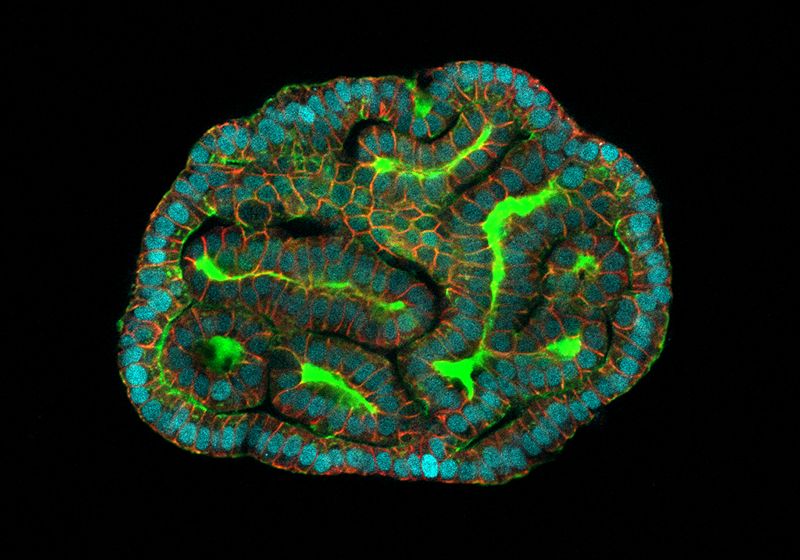
NASA is intensively studying the South Atlantic Anomaly (SAA), a vast region of weakened magnetic intensity that spans from South America to southwest Africa. This anomaly has puzzled scientists for decades and raised concerns due to its impact on modern technology, including satellites and spacecraft. While life on Earth remains unaffected for now, the SAA poses significant risks to orbital systems that traverse this “weak spot” in the planet’s magnetic field.
The anomaly is more than just a technological concern. It provides an unprecedented opportunity to study the complex interplay of forces within Earth’s molten core and understand how they shape the magnetic field—a feature critical to shielding the planet from harmful solar radiation.
What Is the South Atlantic Anomaly?
The South Atlantic Anomaly is often likened to a “dent” in Earth’s magnetic field, where the magnetic shielding is significantly weaker than in surrounding areas. This reduction exposes satellites and spacecraft to an increased bombardment of charged solar particles. For systems passing through the SAA, these particles can cause malfunctions, data corruption, and even permanent damage to sensitive components.
Operators of spacecraft, including the International Space Station, often shut down non-essential systems when passing through the anomaly to minimize the risk of disruption. Despite these precautions, scientists remain concerned about the anomaly’s growing intensity and its potential long-term implications.
The cause of this phenomenon lies deep beneath the Earth’s surface. According to NASA’s Terry Sabaka, “The magnetic field is actually a superposition of fields from many current sources.” At the heart of the anomaly is the movement of molten iron in Earth’s outer core, a process that generates the magnetic field but also leads to irregularities, such as the SAA.
What Causes the Anomaly?
The SAA originates from the complex dynamics within Earth’s molten core, particularly the uneven distribution of molten iron flows. Scientists have identified a massive structure beneath the African continent, known as the African Large Low Shear Velocity Province, as a key disruptor. This dense reservoir interferes with the generation of the magnetic field, creating the localized weakening seen in the SAA region.
“The observed SAA can be also interpreted as a consequence of weakening dominance of the dipole field in the region,” explained Weijia Kuang, a NASA Goddard geophysicist and mathematician. “More specifically, a localized field with reversed polarity grows strongly in the SAA region, thus making the field intensity very weak, weaker than that of the surrounding regions.”
These disturbances, combined with the tilt of Earth’s magnetic axis, contribute to the growing anomaly, which is slowly drifting westward.
The Evolving Nature of the SAA
One of the most alarming aspects of the SAA is that it is not static. Observations reveal that the anomaly is expanding and splitting into two distinct regions. This division adds another layer of complexity to an already puzzling phenomenon, as researchers strive to understand how and why the anomaly is evolving.
“Even though the SAA is slow-moving, it is going through some change in morphology, so it’s also important that we keep observing it by having continued missions,” Sabaka emphasized. “Because that’s what helps us make models and predictions.”
The dynamic nature of the anomaly underscores the need for continuous monitoring. NASA’s satellites, CubeSats, and other observational tools are essential for tracking its growth and changes in shape over time.
Implications for Technology and Earth’s Future
The SAA’s primary impact is on satellites and spacecraft, but its long-term implications could extend beyond technology. Scientists are exploring whether this anomaly could hint at a larger shift in Earth’s magnetic field, such as a pole reversal. These reversals, though rare, occur every few hundred thousand years and could have profound effects on navigation, communication, and radiation exposure.
For now, the immediate challenges are largely technological. Some of the risks posed by the SAA include:
- Satellite Malfunctions: Increased exposure to solar particles can disrupt onboard systems, leading to data corruption or loss.
- Spacecraft Damage: Sensitive instruments may suffer permanent harm when passing through the anomaly.
- Increased Costs: Operators must invest in protective measures and mitigate risks, raising the cost of satellite missions.
| Impact | Description |
|---|---|
| Satellite Malfunctions | Data corruption, glitches, or system shutdowns caused by solar particle exposure. |
| Spacecraft Damage | Permanent harm to sensitive instruments due to weak magnetic shielding. |
| Communication Interruptions | Potential disruptions in navigation and communication systems reliant on satellites. |
Why Continued Monitoring Is Essential
The SAA represents both a challenge and an opportunity for scientists. While it poses risks to technology, it also offers a unique chance to study Earth’s magnetic field and the processes within its core. By improving models and predictions, researchers aim to better understand the SAA and its broader implications for our planet.
NASA’s extensive resources and research programs are crucial for this effort. The agency’s work not only helps protect satellites and spacecraft but also contributes to fundamental science about the dynamics of Earth’s interior.
Got a reaction? Share your thoughts in the comments
Enjoyed this article? Subscribe to our free newsletter for engaging stories, exclusive content, and the latest news.










Leave a Comment